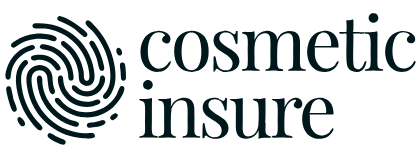How Long Do Lip Fillers Last? What to Expect After Treatment?
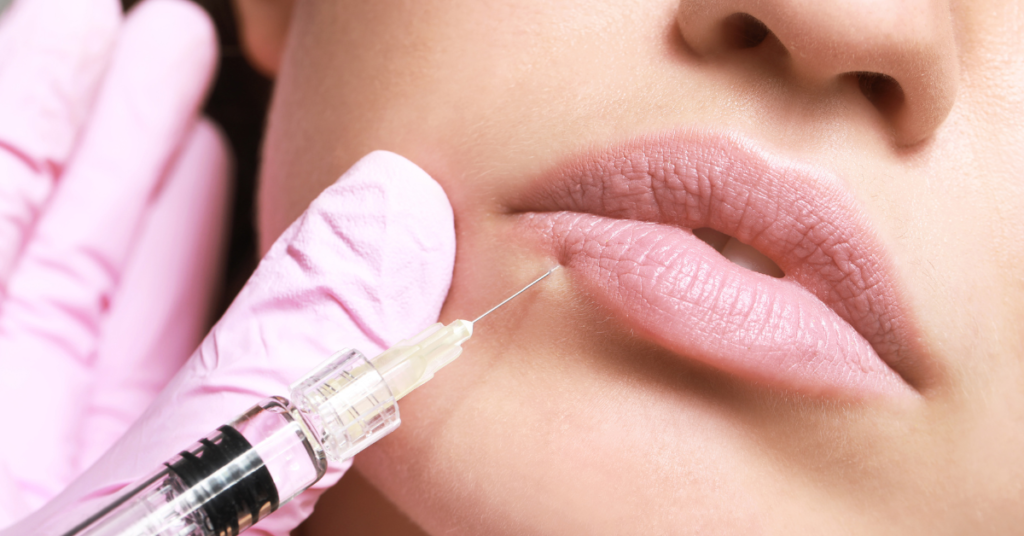
Imagine waking up with the perfect pout that lasts forever—if only it were that simple. Lip fillers, while transformative, have a lifespan typically ranging from 6 to 12 months, with some lasting up to 18 months. After your treatment, you’ll likely experience tenderness and swelling, peaking within the first 48 hours. Knowing how to care for your lips during this period is essential for achieving the best results and minimising complications. Wondering what specific steps you need to take and what to avoid? Let’s explore how to maximise the benefits of your new look. Key Takeaways – Lip fillers typically last between 6 months to 1 year, with some extending up to 18 months. – Post-treatment effects include tenderness, minor discomfort, swelling, and bruising, which peak within 24-48 hours. – Immediate aftercare involves using cold compresses, avoiding strenuous activities, and following practitioner instructions closely. – Complications to watch for include persistent swelling, infection signs, and discoloration; seek medical attention if severe reactions occur. – Regular touch-ups are recommended every 6-9 months to maintain desired appearance and prevent complete dissolving of fillers. Typical Duration of Lip Fillers When considering lip fillers, you might wonder how long their effects will last. The typical duration of lip fillers varies depending on several factors, including the specific lip filler types used. Generally, you can expect results to last between six months to a year. Some formulations may even provide longer-lasting results, extending up to 18 months. To maintain the desired look, regular lip filler maintenance is crucial. You should schedule follow-up appointments with your practitioner to assess the condition of your lips and determine when a touch-up might be necessary. This proactive approach guarantees that you retain a natural and consistent appearance over time. Different lip filler types have unique properties that influence their longevity. For instance, hyaluronic acid-based fillers are popular due to their natural look and feel, but they typically dissolve faster than other options. On the other hand, some synthetic fillers might offer extended durability but could require more diligent maintenance. Understanding the typical duration of lip fillers helps you make informed decisions about your cosmetic treatments. By considering the type of filler and committing to regular maintenance, you can enjoy fuller, more defined lips for an extended period. Types of Fillers Lip fillers come in various types, each designed to achieve specific results and cater to different needs. The most common type is hyaluronic acid fillers. Hyaluronic acid is a naturally occurring substance in your body that helps retain moisture and add volume. When used in lip fillers, it provides immediate plumpness and can be easily adjusted for symmetry. Popular brands like Juvederm and Restylane fall under this category. These fillers are praised for their smooth texture and natural-looking results. Another type of filler involves collagen stimulators. Unlike hyaluronic acid fillers that provide instant volume, collagen stimulators work by encouraging your body to produce more collagen over time. This leads to gradual, long-lasting improvement in lip fullness. Brands such as Sculptra are known for their collagen-stimulating properties. These fillers are ideal if you’re looking for more sustained, natural enhancement. Choosing the right type of filler depends on your specific goals and needs. Whether you opt for the immediate effects of hyaluronic acid or the gradual benefits of collagen stimulators, understanding these options can help you make an informed decision about your lip enhancement treatment. Factors Influencing Longevity Several factors can influence how long lip fillers last, making it important to understand what affects their longevity. First, the injection technique plays a significant role. An experienced practitioner will use precise methods to guarantee even distribution and ideal placement of the filler, which can enhance its durability. Poor technique can lead to uneven results and quicker degradation. Next, product quality is essential. High-quality fillers, typically made from hyaluronic acid, tend to last longer and provide more natural results. Lower-quality products may break down faster, requiring more frequent touch-ups. When selecting a provider, always inquire about the brands and types of fillers they use to confirm you’re getting a reliable product. Another factor is your metabolism. Individuals with faster metabolic rates may find that their fillers break down more quickly. Lifestyle choices, such as smoking or excessive sun exposure, can also impact how long your fillers last. Maintaining a healthy lifestyle can help prolong the effects. Lastly, the area treated and the amount of filler used can influence longevity. Lips are highly mobile, which can cause fillers to wear out faster than in less active areas. Knowing these factors can help you make informed decisions and manage expectations post-treatment. Immediate Post-Treatment Effects Understanding the factors that influence the longevity of lip fillers sets the stage for what to expect immediately after the treatment. Right after your procedure, you might notice a few initial reactions that are completely normal. Your lips will likely feel a bit tender, and you might experience some minor discomfort in the treated area. These sensations typically subside within a few hours. Emotionally, you might feel a mix of excitement and apprehension. Seeing the immediate change in your lip volume could boost your confidence, but it’s also common to experience some initial surprise or uncertainty about your new look. It’s important to remember that these emotional responses are natural and usually temporary. You should also be mindful of how your lips feel and look during this period. The initial reactions are part of the body’s natural response to the fillers and shouldn’t cause concern. If you experience anything unusual or particularly concerning, don’t hesitate to contact your healthcare provider. Swelling and Bruising While it’s common to feel initial tenderness, swelling and bruising are also typical reactions following lip filler treatments. Swelling usually peaks within the first 24 to 48 hours but can last up to a week.
What Are the Best Methods for Skin Tag Removal?
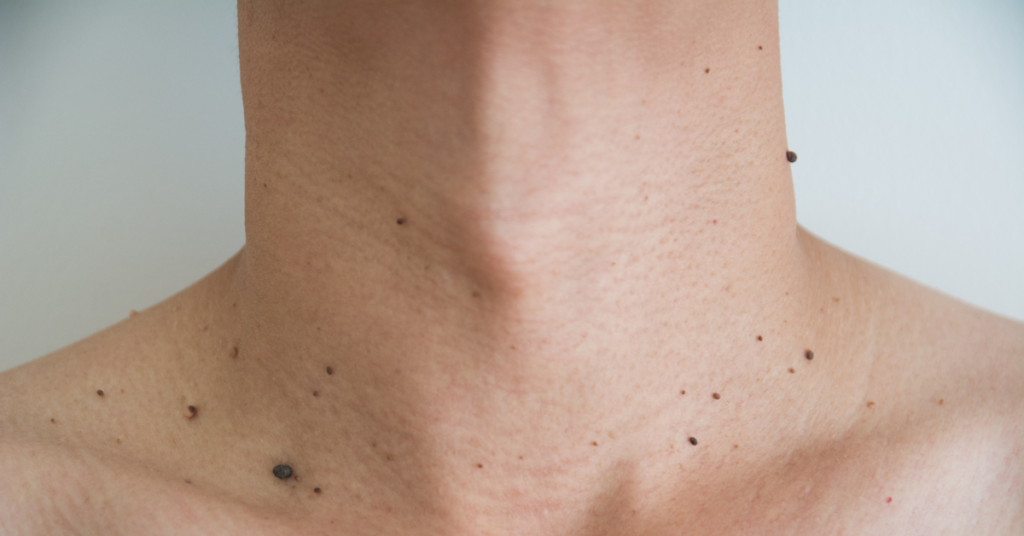
When you’re considering the best methods for skin tag removal, it is important to weigh the pros and cons of each option. You might be intrigued by medical procedures like cryotherapy or excision, known for their effectiveness but requiring a doctor’s visit. Over-the-counter solutions, such as cryotherapy kits and topical treatments, offer convenience but vary in results. Natural remedies like apple cider vinegar and tea tree oil are popular for their low risk of side effects. So, how do you decide which method suits your needs best? Let’s explore the effectiveness and suitability of each option. Key Takeaways – Cryotherapy: Freezes skin tags with liquid nitrogen for quick, minimally invasive removal. – Excision: Surgically cuts off skin tags, ensuring complete removal and minimising regrowth. – Ligation: Cuts off blood supply, causing skin tags to wither and fall off. – Electrosurgery: Uses electrical currents to effectively remove skin tags. – Over-the-Counter Solutions: Include cryotherapy kits, salicylic acid products, and skin tag removal patches for at-home treatment. Cryotherapy Cryotherapy is a highly effective method for skin tag removal that involves the application of extreme cold to destroy abnormal skin cells. By using liquid nitrogen, which can reach temperatures as low as -196°C, you can target and freeze the skin tag, causing the cells to die and naturally fall off. This technique is known for its precision, reducing the chance of damaging surrounding healthy tissue. One of the primary cryotherapy benefits is its minimally invasive nature. Unlike surgical methods, you won’t need stitches, and there’s generally less bleeding and scarring. The procedure is relatively quick, often taking just a few minutes, and requires little to no downtime. Additionally, cryotherapy can be performed in a dermatologist’s office, making it a convenient option. However, there are some cryotherapy risks to evaluate. Some patients might experience pain or a burning sensation during the procedure. Post-treatment, you could notice redness, swelling, or blistering at the site. In rare cases, there could be changes in skin pigmentation. It’s vital to consult with a healthcare provider to weigh these risks against the benefits and determine if cryotherapy is the right choice for you. Excision Excision, often considered the gold standard for skin tag removal, involves the precise surgical cutting of the skin tag using a scalpel or surgical scissors. This method guarantees complete removal of the skin tag at its base, minimising the chance of regrowth. When performed by a skilled healthcare professional, excision offers a high success rate and minimal complications. Key Steps in Excision: Preparation: The area is cleaned and sterilised to prevent infection. A local anaesthetic is applied to numb the area. Surgical Cutting: Using surgical techniques, the healthcare provider carefully excises the skin tag with a scalpel or surgical scissors. Hemostasis: Any bleeding is controlled using cauterization or applying pressure. Post Removal Care: The wound is cleaned, and a sterile bandage is applied. Follow-up care includes keeping the area clean, monitoring for signs of infection, and using an antibiotic ointment if recommended. Post removal care is critical for guaranteeing proper healing and preventing complications. You should follow your healthcare provider’s instructions meticulously, which typically include keeping the area dry and protected for a few days and avoiding strenuous activities that might disrupt the site. Excision remains a reliable and effective method for skin tag removal due to its precision and low recurrence rate. Ligation After exploring the surgical precision of excision, let’s turn to another effective method for skin tag removal: ligation. Ligation involves cutting off the blood supply to the skin tag, causing it to wither and fall off naturally. This method can be performed both as a professional surgical technique and through home remedies. In a clinical setting, a healthcare provider employs sterile surgical thread or a specialised ligation device to guarantee precise and hygienic application. The thread is tightly tied around the base of the skin tag, restricting blood flow. Over the course of a few days to a week, the skin tag will gradually die and detach. For those considering home remedies, over-the-counter ligation kits are available. These kits typically include a small band designed to be placed around the skin tag. While not as precise as professional surgical techniques, these home remedies can be effective for smaller skin tags. However, it’s essential to follow the instructions carefully to avoid complications like infection or scarring. Ligation offers a low-risk, minimally invasive option for skin tag removal, making it a popular choice. Always consult a healthcare provider to determine the most appropriate method for your specific condition. Over-the-Counter Solutions When considering over-the-counter solutions for skin tag removal, you’ll find several products designed to offer convenience and efficacy. These products provide a practical alternative to clinical procedures and have varying degrees of product effectiveness. Here are some of the most common over-the-counter methods: Cryotherapy Kits: These utilise freezing technology similar to what dermatologists use. The kits usually contain an applicator and a freezing agent like liquid nitrogen, which can effectively cause the skin tag to fall off over time. Topical Solutions: These are applied directly to the skin tag. Ingredients like salicylic acid work by breaking down the tissue, making it easy for the skin tag to be removed. Product effectiveness varies, so read reviews and choose reputable brands. Skin Tag Removal Patches: These adhesive patches are infused with herbal and chemical ingredients aimed at drying out the skin tag. They offer a non-invasive and straightforward approach, though results may take longer compared to other methods. Home Remedies in OTC Form: Some products combine traditional home remedies with modern formulations. These might include tea tree oil or other natural extracts, providing a blend of convenience and traditional wisdom. Using these over-the-counter methods can be a cost-effective and convenient way to address skin tags, though outcomes may vary based on
Can Chest Botox Improve Your Confidence and Appearance?
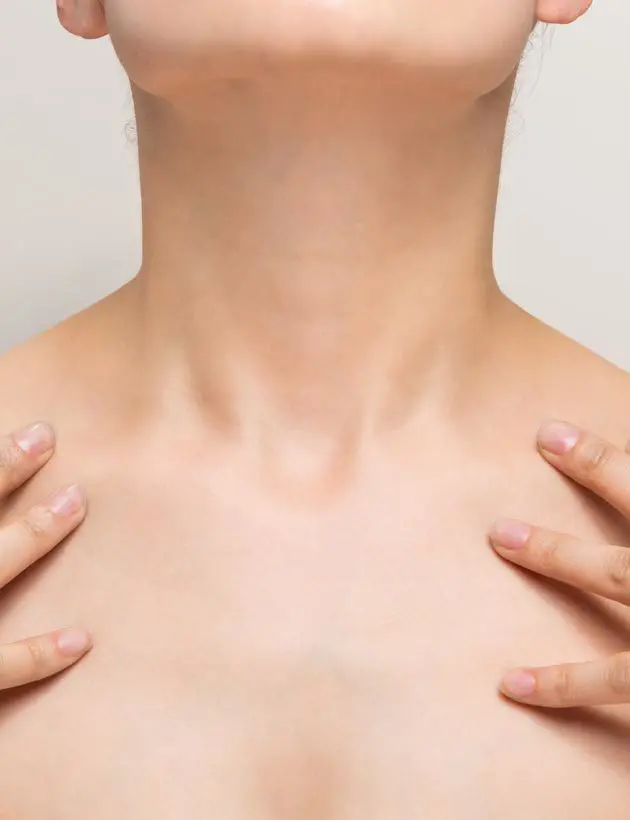
Have you ever thought about how Chest Botox could enhance your confidence and appearance? This minimally invasive procedure smooths out wrinkles and fine lines in the pectoral region, giving you a more youthful look. Imagine feeling comfortable in low-cut clothing and swimsuits while also enjoying improved posture from relaxed underlying muscles. But before you consider booking a session, it’s vital to understand how it works, the benefits, potential risks, and whether you’re an ideal candidate. Curious about the details? Let’s explore further. Key Takeaways – Chest Botox smooths wrinkles and fine lines, enhancing a youthful appearance. – It boosts confidence by improving comfort in low-cut clothing or swimsuits. – The procedure alleviates muscle tightness, enhancing daily comfort. – Improved posture from reduced muscle strain can positively impact self-esteem. – Results generally last three to six months, promoting sustained aesthetic improvements. What Is Chest Botox? Although you might be familiar with Botox for smoothing facial wrinkles, chest Botox specifically targets the pectoral region to enhance aesthetic appeal and alleviate certain medical conditions. By injecting botulinum toxin type A into the skin of your chest, this procedure relaxes the underlying muscles, thereby reducing the appearance of chest wrinkles. This cosmetic procedure is particularly beneficial for individuals experiencing horizontal lines and creases that develop due to ageing or sun damage. In a technical sense, chest Botox works by inhibiting the release of acetylcholine at the neuromuscular junction, leading to muscle relaxation. This biochemical mechanism smooths out the skin’s surface, effectively minimising wrinkles. The procedure is minimally invasive, involving a series of small injections administered by a trained medical professional. While the primary aim is cosmetic, chest Botox can also address certain medical issues. For instance, it may help alleviate muscle spasms or pain in the pectoral region. Given its dual functionality, chest Botox is steadily gaining traction as a preferred option among various cosmetic procedures. Understanding the specifics of this treatment can guide you in making informed decisions about your aesthetic and medical needs. Benefits of Chest Botox The allure of chest Botox lies in its multifaceted benefits, both aesthetic and medical. This treatment can greatly enhance your aesthetic appeal by smoothing out wrinkles and fine lines on your chest, leading to a more youthful and rejuvenated appearance. By addressing these signs of ageing, chest Botox can boost your confidence, making you feel more comfortable in your skin, whether you’re wearing a low-cut blouse or a swimsuit. From a medical perspective, chest Botox offers enhanced comfort for individuals experiencing muscle tightness or spasms in the chest area. By relaxing the underlying muscles, Botox can alleviate discomfort, making everyday activities more enjoyable. Additionally, this treatment can also help improve posture by reducing the strain on chest muscles, further contributing to overall well-being. Moreover, chest Botox is minimally invasive with little to no downtime, allowing you to quickly return to your daily routine. The procedure is performed in a controlled, clinical setting, ensuring a high level of safety and efficacy. How Chest Botox Works Building on the multifaceted benefits of chest Botox, understanding how this treatment works is key to appreciating its effectiveness. Botox, or botulinum toxin, is a neurotoxic protein that temporarily inhibits the release of acetylcholine at the neuromuscular junction. When injected into the chest muscles, this action leads to muscle relaxation by preventing muscle contractions. The result is a smoother, more refined chest appearance, enhancing overall chest aesthetics. During the procedure, a qualified practitioner will strategically inject small amounts of Botox into specific areas of the chest. These injections target hyperactive muscles that contribute to wrinkles or an uneven chest contour. By relaxing these muscles, Botox helps to reduce the appearance of fine lines and sagging, promoting a more youthful and firm chest profile. The onset of muscle relaxation typically begins within a few days post-injection, with full effects visible around two weeks. The results can last between three to six months, depending on individual factors such as metabolism and activity level. Regular maintenance sessions are often recommended to sustain the improved chest aesthetics. This technical process underscores the precision and efficacy of Botox in achieving desired cosmetic outcomes. Risks and Side Effects When considering chest Botox treatments, it’s vital to understand the potential risks and side effects associated with the procedure. Proper injection techniques are fundamental to minimise complications. Incorrectly administered injections can lead to uneven results or muscle weakness, adversely affecting your appearance and, in rare cases, your ability to perform daily activities. Patient experiences vary, but common side effects include localised pain, swelling, and bruising at the injection site. These are typically short-lived and manageable with over-the-counter pain relief and cold compresses. Some patients report temporary redness or itching, which should subside within a few days. More serious risks, though uncommon, include allergic reactions to the Botox toxin. Symptoms may include difficulty breathing, swelling of the face or throat, and severe dizziness. If you experience any of these, seek medical attention immediately. Additionally, there’s a minimal risk of unintended migration of the toxin to adjacent muscles, potentially causing unintended muscle relaxation or asymmetry. To mitigate these risks, verify your practitioner is certified and experienced in chest Botox injection techniques. By doing so, you can maximise the likelihood of a positive outcome while minimising potential side effects. Always discuss your medical history and any concerns with your provider beforehand. Ideal Candidates Frequently, individuals seeking chest Botox treatments share common characteristics that make them ideal candidates for the procedure. Typically, you might be an ideal candidate if you’re in good overall health, have realistic treatment expectations, and possess specific aesthetic concerns such as visible lines or wrinkles on the chest area. Additionally, if you’ve tried non-invasive methods without satisfactory results, chest Botox might offer a viable alternative. Your skin type and elasticity also play a significant role in determining candidacy. Those
Is Lip Filler Safe? What Should You Consider Before Treatment?
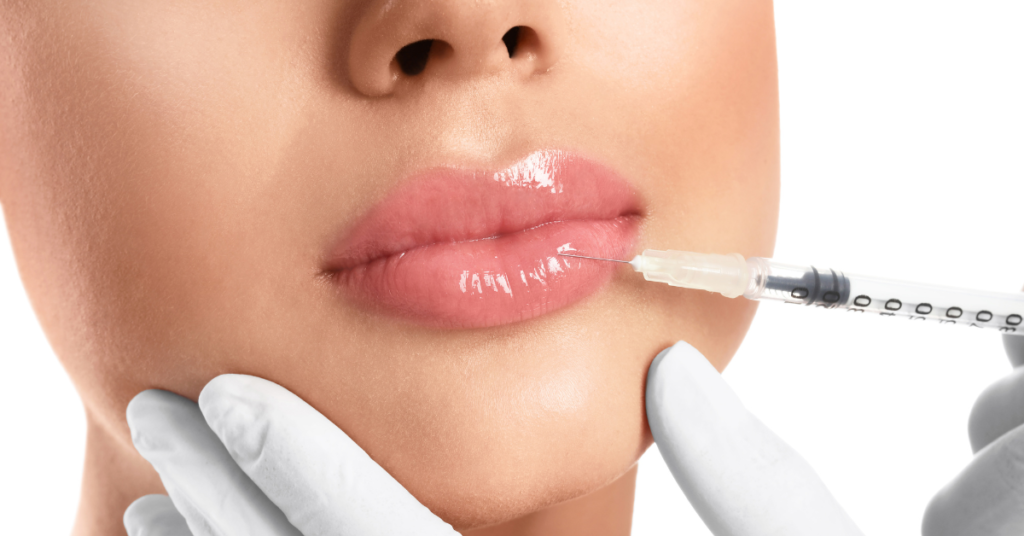
Considering lip fillers? Before you decide, you’ll need to weigh several factors to guarantee a safe and satisfying outcome. It’s not just about wanting fuller lips; the type of filler, potential side effects, and the expertise of your practitioner play vital roles. Hyaluronic acid fillers are popular for their safety and temporary nature, but they’re not without risks. Discussing your medical history and aesthetic goals during a thorough consultation is key. So, what should you be on the lookout for to make an informed decision? Let’s explore the essentials you should keep in mind. Key Takeaways – Hyaluronic acid fillers are generally safe, providing temporary volume with minimal risk when administered by a qualified practitioner. – Common side effects include swelling and bruising, which typically subside within a few days. – Allergic reactions and vascular complications are rare but require immediate medical attention if symptoms arise. – Choose a certified and experienced practitioner to minimise risks and ensure proper technique. – Post-treatment care includes avoiding strenuous activities and alcohol to reduce swelling and promote healing. Types of Lip Fillers When considering lip fillers, it’s crucial to understand the different types available to make an informed decision. The primary categories include hyaluronic acid-based fillers and collagen-based fillers. Hyaluronic acid fillers are the most commonly used due to their biocompatibility and natural occurrence in the body. These fillers provide temporary volume and hydration, typically lasting six to twelve months. Brands like Juvederm and Restylane are popular options, offering varying viscosities to achieve different aesthetic results. Collagen-based fillers, on the other hand, were some of the first used in aesthetic medicine. They’re derived from either human or bovine sources and work by boosting the skin’s natural collagen production. However, they’ve fallen out of favour due to shorter duration and higher risk of allergic reactions compared to hyaluronic acid fillers. Modern advancements have seen a decline in collagen-based fillers, but they’re still available for those seeking specific outcomes. Benefits of Lip Fillers Lip fillers offer several compelling benefits for individuals seeking to enhance their appearance. One of the primary advantages is achieving a natural enhancement of the lips. Modern lip fillers, typically composed of hyaluronic acid, are designed to mimic the body’s natural substances. This allows for subtle, gradual improvements that align with your aesthetic goals without appearing artificial. Another significant benefit is the customization of the treatment. You can work closely with your clinician to determine the exact volume and contour that best suits your facial symmetry, ensuring personalised results. This tailored approach helps you achieve the fuller, more defined lips you desire while maintaining a harmonious balance with your other facial features. Additionally, the procedure is minimally invasive and offers immediate results. The application of lip fillers requires only a few strategically placed injections, and the outcomes are visible almost instantly. Recovery time is generally minimal, allowing you to return to daily activities swiftly. Potential Side Effects While lip fillers are generally well-tolerated and safe, it’s important to be aware of potential side effects. Swelling and bruising are the most common adverse effects post-treatment. Swelling typically peaks within the first 24 to 48 hours and can be managed with cold compresses and over-the-counter anti-inflammatory medications. Elevating your head while sleeping can also aid in swelling management. Bruising prevention is vital and can be achieved by avoiding blood-thinning medications, alcohol, and certain supplements like Vitamin E and fish oil before your procedure. Arnica montana, a homoeopathic remedy, is often recommended to reduce bruising. In addition to these common side effects, there are rarer complications to keep in mind. These include infection, which can manifest as redness, warmth, or pus at the injection site. Immediate medical attention is necessary if these symptoms occur. Another rare but serious side effect is vascular occlusion, where the filler inadvertently blocks a blood vessel, leading to tissue damage. Early signs include severe pain and skin colour changes. Quick intervention with hyaluronidase, an enzyme that dissolves hyaluronic acid fillers, is essential in such cases. Understanding these potential side effects enables you to make informed decisions and take appropriate precautions. Choosing a Qualified Practitioner Selecting a qualified practitioner is essential for guaranteeing the safety and efficacy of your lip filler treatment. Start by verifying the practitioner’s credentials. They should be licensed medical professionals with specialised training in cosmetic procedures. Additionally, check if they’re affiliated with recognized medical boards or associations, which indicates adherence to high standards of practice. The importance of consultation can’t be overstated. A thorough consultation allows the practitioner to assess your medical history, understand your aesthetic goals, and discuss the potential risks involved. During this consultation, you should feel free to ask questions and gauge their expertise and communication skills. Here are three critical steps to guarantee you choose the right practitioner: Verify Credentials: Confirm they’ve the necessary medical certifications and specialised training. Check Reviews and Before/After Photos: Look for testimonials and visual evidence of their work to assess quality and consistency. Assess the Clinic’s Environment: The clinic should be clean, well-equipped, and adhere to stringent hygiene protocols. What to Expect During Treatment Having chosen a qualified practitioner, you’re ready to proceed with your lip filler treatment. The procedure typically starts with a thorough evaluation of your lip anatomy and desired outcomes. Your practitioner will discuss the appropriate injection techniques to achieve natural-looking results. Common techniques include linear threading, serial puncture, and cross-hatching, each tailored to enhance specific areas of your lips. Pain management is a critical aspect of the treatment. A topical anaesthetic, like lidocaine, is usually applied to minimise discomfort. Some fillers also contain lidocaine, which further helps in reducing pain during the injection. You might feel a slight pinch or pressure, but significant pain is uncommon. During the procedure, your practitioner will use a fine needle or cannula to inject the filler. The
What Are the Benefits of Endolift Treatment for Facial Rejuvenation?
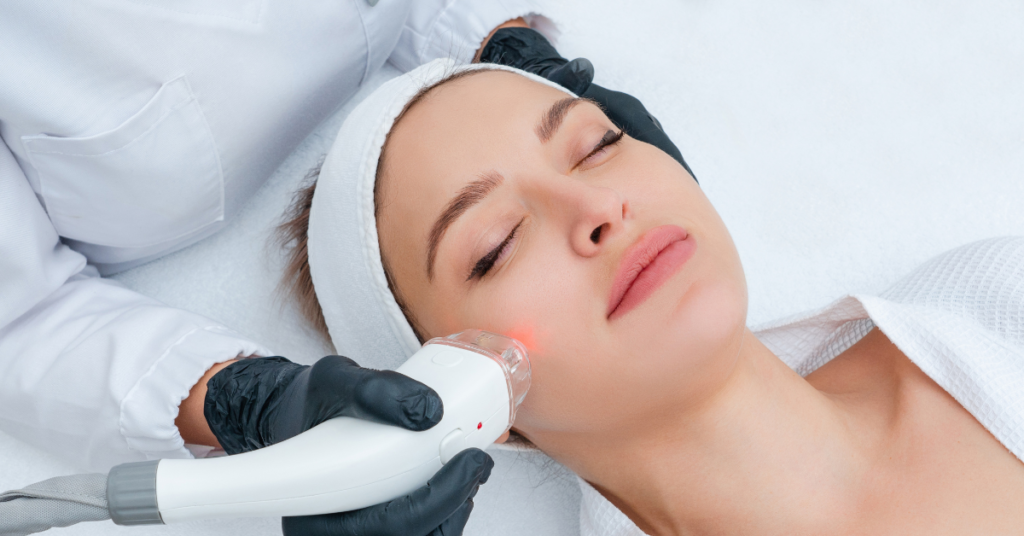
Imagine your skin as a well-worn book cover, showing signs of age and weathering. Endolift treatment can be the revitalising polish it needs. Using laser technology, this minimally invasive procedure enhances collagen production and targets fat deposits, effectively tightening and rejuvenating your facial skin. With minimal downtime and results that last for years, it offers a convenient alternative to traditional surgical methods. But what makes Endolift truly stand out, and how does it cater to individual facial rejuvenation needs? Let’s explore the specifics and see why it’s gaining traction in cosmetic circles. Key Takeaways – Stimulates collagen production for firmer, smoother skin and reduced wrinkles. – Enhances skin texture through precise laser energy and cellular renewal. – Tightens sagging skin and reduces facial fat deposits effectively. – Minimally invasive with low risk of complications and quick recovery. – Provides immediate and long-lasting facial rejuvenation results. Skin Tightening When considering the benefits of Endolift treatment, skin tightening stands out prominently. This minimally invasive procedure is highly effective for improving skin elasticity. As you age, your skin loses its natural elasticity, resulting in sagging and wrinkles. Endolift uses laser energy to stimulate collagen production, which plays a vital role in maintaining skin elasticity. By promoting collagen synthesis, Endolift helps restore the skin’s firmness and resilience. Moreover, Endolift excels in facial contouring. The targeted laser energy reaches the deep dermal layers without damaging the surface, allowing for precise contour adjustments. This is particularly beneficial for areas like the jawline, cheeks, and neck, where sagging skin can obscure your natural facial structure. The procedure’s precision guarantees a more defined, youthful appearance, enhancing your facial contours. Clinical studies emphasise the efficacy of Endolift in skin tightening. Patients often notice immediate improvements, with ideal results appearing over the following months as collagen continues to regenerate. The procedure’s safety profile is well-documented, with minimal downtime and low risk of complications. To summarise, Endolift’s ability to enhance skin elasticity and achieve facial contouring makes it a valuable option for facial rejuvenation. Fat Reduction Beyond skin tightening and facial contouring, Endolift treatment also offers significant benefits in fat reduction. This innovative procedure employs laser-induced thermal energy to target and break down adipose tissue, leading to effective fat loss. By focusing on problem areas, Endolift facilitates body contouring, enhancing your facial profile and reducing unwanted fat deposits. Benefits of Fat Reduction with Endolift: Precision: Unlike traditional fat reduction techniques, Endolift allows for precise targeting of adipose tissue, ensuring a more sculpted appearance. Efficiency: The laser technology used in Endolift rapidly heats and liquefies fat cells, which are then naturally metabolised by your body. Safety: Clinical studies have demonstrated that Endolift is a safe procedure with minimal risk of complications, making it a reliable option for facial rejuvenation. Satisfaction: Patients often report high levels of satisfaction due to the noticeable improvement in facial contours and reduction of fat deposits. Minimally Invasive Opting for Endolift treatment means choosing a minimally invasive approach to facial rejuvenation. This technique utilises laser fibres inserted under the skin to stimulate collagen production and tighten the tissue. Unlike traditional surgical methods, Endolift doesn’t require large incisions, considerably reducing the risk of complications and scarring. The precision of this minimally invasive procedure guarantees that you experience less discomfort and a quicker return to your daily activities. Your patient experience is generally more positive with Endolift. The use of local anaesthesia minimises pain, and the absence of extensive surgical wounds enhances overall comfort. Treatment satisfaction is high among patients who prefer cosmetic solutions with fewer risks and a less intimidating recovery process. Clinical studies underline the efficacy of Endolift in achieving noticeable improvements in skin laxity and facial contouring, often comparable to more invasive alternatives. Moreover, the targeted nature of the laser technology allows for customization based on your specific needs, enhancing both the safety and effectiveness of the procedure. By opting for Endolift, you’re embracing a state-of-the-art, scientifically-backed treatment that prioritises your comfort and satisfaction, making it a compelling option for facial rejuvenation. Quick Recovery In addition to its minimally invasive nature, Endolift stands out for its remarkably quick recovery period. Unlike traditional surgical methods, the downtime associated with Endolift is minimal, allowing you to return to your daily activities swiftly. Clinical studies demonstrate that most patients experience mild swelling and bruising, which typically resolve within a few days. This rapid recovery can be attributed to the precision of the laser technology used, which minimises tissue trauma. Effective post treatment care is essential for maximising recovery. Adhering to these guidelines will enhance your healing process: Follow Medical Advice: Always adhere to the post-operative instructions provided by your healthcare provider. Maintain Cleanliness: Keep the treated area clean to prevent infections. Avoid Strenuous Activities: Refrain from heavy lifting and vigorous exercise for a short period. Stay Hydrated: Drinking plenty of water aids in the healing process. Patient testimonials consistently highlight the ease of recovery following Endolift procedures. Many patients report returning to work and social activities within just a few days, underscoring the treatment’s efficiency. Long-Lasting Results Endolift treatment offers long-lasting results, making it a preferred choice for facial rejuvenation. You’ll find that the procedure’s efficacy extends well beyond initial recovery, contributing markedly to patient satisfaction. Unlike many minimally invasive treatments that require frequent touch-ups, Endolift provides durable outcomes, reducing the need for recurrent interventions. Clinical studies have demonstrated that the treatment longevity of Endolift is impressive, often lasting several years. This extended duration is attributed to its ability to stimulate subdermal remodelling. By precisely targeting the deeper layers of your skin, Endolift promotes sustained tightening and lifting, which translates into a more youthful appearance over time. Patients consistently report high satisfaction rates, largely due to the long-lasting nature of the results. When you undergo Endolift, you’re investing in a treatment that offers
How Effective Is Skin Tag Removal? What You Need to Know
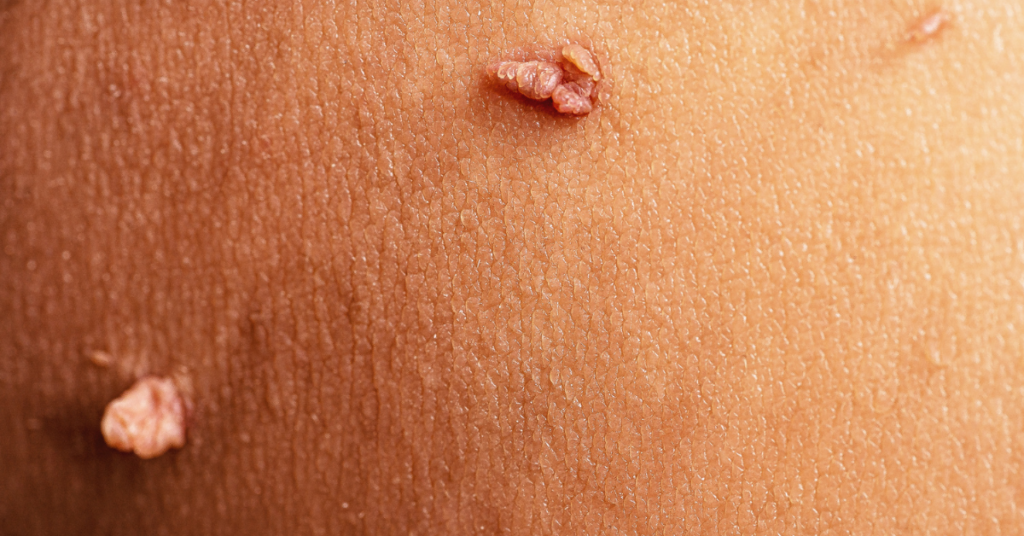
Have you ever wondered just how effective skin tag removal really is? While many methods promise quick and easy solutions, the actual success can vary based on the technique used and the skin tag’s specific characteristics. From over-the-counter treatments to professional procedures like cryotherapy and excision, each option has its own set of pros and cons. Some methods might offer instant results but could lead to temporary discoloration or minor scarring. To truly understand which approach suits you best and minimises complications, there’s a lot more you should consider. Key Takeaways – Cryotherapy has a high success rate but may cause temporary skin discoloration. – Professional excision provides immediate results with low recurrence when performed by skilled practitioners. – Laser removal is precise with minimal downtime but may cause temporary redness and swelling. – Over-the-counter treatments are less effective and require longer application times. – Electrosurgery ensures quick recovery and precision but carries risks of scarring and infection. What Are Skin Tags? Skin tags, medically known as acrochordons, are small, benign growths that commonly appear on areas where your skin folds, such as the neck, armpits, and groyne. These growths are typically flesh-coloured or slightly darker and can vary in size from a few millimetres to several centimetres. Understanding the skin tag characteristics is essential for identifying them accurately. In terms of skin tag appearance, they’re often described as soft, hanging pieces of skin attached by a thin stalk, known as a peduncle. You might notice a smooth or slightly wrinkled surface texture. Unlike other skin lesions, skin tags are usually painless and don’t change colour rapidly, which helps differentiate them from potentially harmful conditions like melanomas or warts. Most people discover skin tags accidentally, as they don’t cause discomfort unless subjected to friction from clothing or jewellery. Though these growths are harmless, their appearance can be bothersome, prompting many to seek removal options. Recognizing these defining characteristics and appearances can help you make informed decisions about whether to consult a healthcare professional for further evaluation or removal techniques. Causes of Skin Tags Several factors contribute to the formation of skin tags, and understanding these can help you better manage or prevent them. Skin tags, or acrochordons, are benign growths often found in areas where skin folds and experiences friction. They appear as small, soft, flesh-coloured protrusions and are generally painless. Here are four primary causes: Friction: Skin rubbing against skin, clothing, or jewellery increases the risk of skin tags. Common areas include the neck, armpits, and groyne. Hormonal Changes: Pregnancy and conditions like polycystic ovary syndrome (PCOS) can trigger skin tag formation due to hormonal fluctuations. Genetics: A family history of skin tags may increase your susceptibility to developing them. Obesity: Excess body weight leads to more skin folds, increasing friction and the likelihood of skin tags. Recognizing these causes allows for proactive skin tag prevention. For instance, maintaining a healthy weight can minimise skin folds, reducing friction. If you’re experiencing skin tag symptoms, such as small, soft growths in high-friction areas, consider consulting a dermatologist. By understanding what triggers skin tags, you can take steps to reduce their occurrence and maintain healthier skin. Over-the-Counter Treatments When considering over-the-counter treatments for skin tags, you’ll find a range of options that promise effective results. These over-the-counter solutions can vary widely in their mechanisms and applications, but many offer convenient and non-invasive methods for skin tag removal. Among the most popular are topical treatments, which typically include ingredients like salicylic acid or tea tree oil. These compounds work by breaking down the tissue of the skin tag, ultimately causing it to fall off. Another common over-the-counter solution is cryotherapy, where a freezing agent is applied to the skin tag. This method mimics the professional cryotherapy techniques used by dermatologists but is accessible for at-home use. Evidence suggests that cryotherapy can be highly effective, often requiring just one or two applications to remove the skin tag completely. It’s important to follow the instructions carefully when using these treatments to avoid skin irritation or further complications. While over-the-counter options provide a viable and less costly alternative to professional removal, individual results can vary. Clinical studies indicate that the effectiveness of these treatments can depend on the size and location of the skin tag. Always consult with a healthcare provider if you have concerns. Home Remedies Often overlooked, home remedies for skin tag removal can provide a natural and cost-effective alternative to commercial treatments. If you’re considering DIY solutions, there are several evidence-based methods you might find effective. Apple Cider Vinegar: Soak a cotton ball in apple cider vinegar, apply it to the skin tag, and secure it with a bandage. The acetic acid can help break down the tissue, causing the tag to fall off over time. Tea Tree Oil: Known for its antifungal and antiviral properties, tea tree oil can dry out skin tags. Apply a few drops to a cotton ball and secure it over the tag with a bandage. Garlic Paste: Crush a garlic clove into a paste and apply it directly to the skin tag. Cover it with a bandage overnight, as garlic’s natural enzymes may help reduce the tag’s size. Banana Peel: Place a small piece of banana peel over the tag, inside facing down, and secure it with tape. The enzymes and antioxidants in the peel could aid in the tag’s removal. These natural treatments offer a gentle, accessible approach to dealing with skin tags. Always consult a healthcare professional to verify these DIY solutions are suitable for your skin type and condition. Cryotherapy Cryotherapy, a popular method for skin tag removal, involves freezing the skin tag with liquid nitrogen. This procedure causes the water within the skin tag cells to crystallise, leading to cell rupture and eventual detachment of the
Can Chest Botox Help You Achieve a Smoother, More Youthful Look?
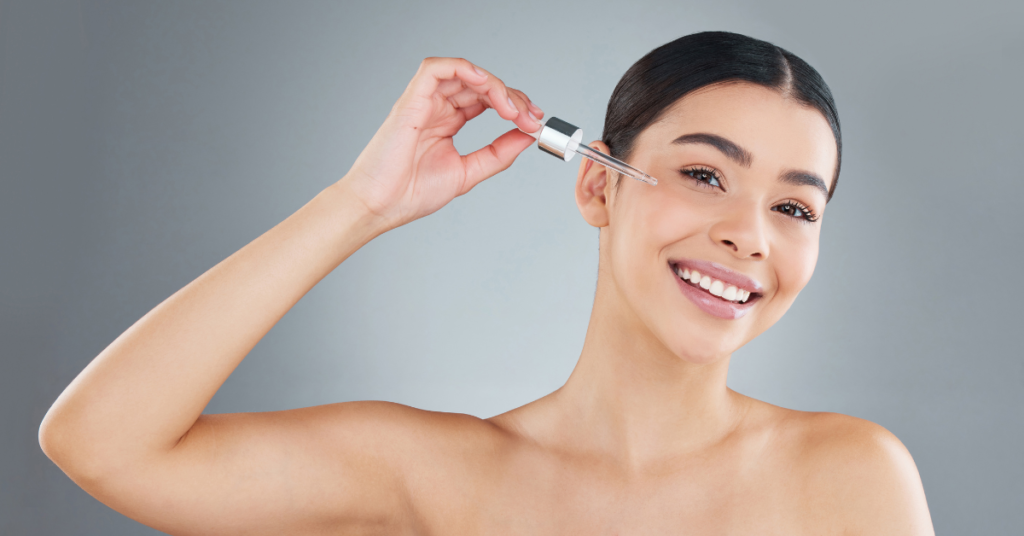
Have you ever considered Chest Botox to achieve a smoother, more youthful look? This minimally invasive procedure targets wrinkles and fine lines in your décolletage, offering an alternative to more invasive surgical options. By injecting botulinum toxin into the pectoral muscles, you can temporarily relax muscle activity, resulting in improved skin texture and elasticity. With results appearing within days and lasting up to six months, it’s no wonder many are turning to Chest Botox. But is it the right choice for you? Let’s explore the benefits, potential risks, and what to expect during treatment. Key Takeaways – Chest Botox reduces fine lines and wrinkles, leading to a smoother chest appearance. – The procedure improves skin texture and elasticity in the décolletage area. – Results are noticeable within days, with full effects visible in about two weeks. – Minimally invasive with minimal downtime, allowing a quick return to daily activities. – Effects last three to six months, offering a cost-effective alternative to surgical options. What Is Chest Botox? Chest Botox, also known as intramuscular botulinum toxin injections for the chest, involves the strategic administration of Botox into the pectoral muscles to reduce the appearance of fine lines, wrinkles, and sagging skin. This aesthetic treatment targets chest wrinkles by temporarily relaxing the underlying muscles, resulting in smoother, more youthful skin. You might consider Chest Botox if you’re concerned about the signs of ageing in your décolletage area. This treatment can be particularly effective for individuals experiencing moderate to severe chest wrinkles caused by factors such as sun damage, ageing, or repetitive movements. Clinical studies have shown that botulinum toxin, the active ingredient in Botox, can improve the skin’s texture by reducing muscle activity in the treated area. When you opt for Chest Botox, you’re investing in a minimally invasive procedure with a proven track record in aesthetic treatments. The injections are typically well-tolerated and require minimal downtime, making them a convenient option for those seeking cosmetic enhancement without significant disruption to their daily routine. The results are gradual but noticeable, offering a rejuvenated appearance that complements other anti-aging regimens you might already be following. How Chest Botox Works Understanding the procedure behind Chest Botox can help you appreciate its effectiveness in rejuvenating the décolletage area. The process begins with a consultation to assess your skin and determine the appropriate injection sites. During the actual treatment, a series of microinjections are administered into the superficial muscles of the chest. These injections utilise botulinum toxin type A, which temporarily paralyses the targeted muscles, reducing the appearance of wrinkles and fine lines. The injection techniques for chest rejuvenation are essential for ideal results. Precision is key; the injector must be skilled in identifying the correct muscles to avoid unintended side effects. By carefully placing the injections, the provider guarantees a natural, smooth appearance without affecting muscle functionality. Evidence supports the efficacy of Chest Botox in improving the skin’s texture and elasticity. Studies have shown that patients experience significant improvements in the appearance of the décolletage, with results typically lasting three to six months. This minimally invasive procedure has a quick recovery time, allowing you to return to your daily activities almost immediately. Understanding these technical aspects highlights why Chest Botox is a popular choice for achieving a youthful, rejuvenated chest area. Benefits of Chest Botox Rejuvenation through Chest Botox offers a range of compelling benefits that make it a sought-after procedure for those looking to restore their youthful appearance. By targeting the muscles responsible for wrinkles and fine lines, Chest Botox can greatly improve the texture and smoothness of your décolletage. This procedure isn’t just about superficial enhancement; it provides medically substantiated benefits that contribute to both aesthetic enhancement and overall skin health. Consider the following benefits of Chest Botox: – Reduction of Wrinkles: Botox injections relax the muscles, thereby reducing the appearance of wrinkles and fine lines on your chest. – Improved Skin Texture: The treatment leads to smoother skin, making your chest look more youthful and refreshed. – Non-Invasive Procedure: Unlike surgical options, Chest Botox is minimally invasive, with little to no downtime required. – Quick Results: You can start seeing improvements within a few days, with full results typically visible within two weeks. – Long-Lasting Effects: While not permanent, the effects can last for several months, making it a cost-effective option for chest rejuvenation. Potential Risks and Side Effects When considering Chest Botox, it’s vital to weigh the potential risks and side effects alongside the benefits. Though generally safe when administered by qualified professionals, Chest Botox isn’t without its drawbacks. One major concern is the possibility of allergic reactions. Botox contains botulinum toxin type A, which can trigger hypersensitivity in some individuals. Symptoms might include itching, rash, or even anaphylaxis in rare cases. As a result, it’s important to discuss any history of allergies with your healthcare provider before undergoing the procedure. Bruising risks are another common side effect. The chest area is vascular, and injections could cause blood vessels to break, resulting in bruises. These bruises usually resolve within a week but can be unsightly and uncomfortable. To mitigate bruising risks, avoid blood-thinning medications like aspirin and alcohol several days before the procedure. Other potential side effects include localised pain, swelling, and temporary muscle weakness. In rare instances, improper injection technique can lead to asymmetry or unintended muscle paralysis. Ensuring that the procedure is performed by a board-certified dermatologist or plastic surgeon greatly reduces these risks. Understanding these potential complications allows you to make an informed decision about Chest Botox. Who Should Consider It? Given the potential risks and side effects, identifying the right candidates for Chest Botox is vital. Not everyone will benefit equally from this cosmetic procedure, and understanding who should consider it can help you make an informed decision. Ideal candidates typically fall within specific
Is Lip Filler the Secret to Achieving the Perfect Pout?
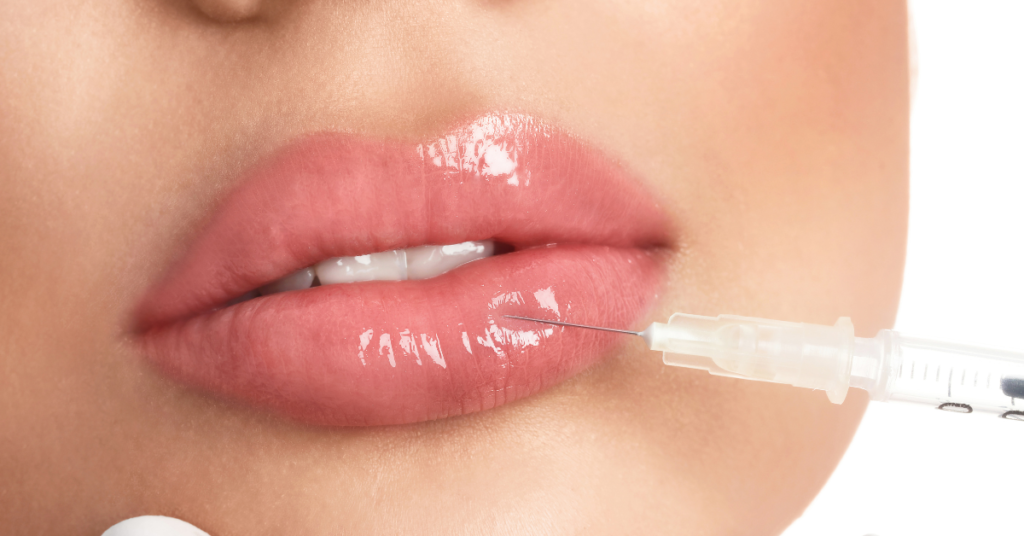
When you think about achieving the perfect pout, lip fillers often come to mind as a quick and effective solution. These treatments use hyaluronic acid to enhance lip volume and shape, delivering noticeable results almost instantly. However, it’s important to contemplate both the benefits and potential risks before deciding if this option is right for you. Are you aware of the alternatives and what to look for in a qualified provider? Understanding these factors can help you make an informed decision on your journey to fuller, more defined lips. Key Takeaways – Lip fillers provide immediate volume and contour enhancement for a fuller pout. – Hyaluronic acid fillers blend naturally with lip tissue for a seamless look. – Results from lip fillers typically last between six to twelve months. – The minimally invasive procedure offers quick recovery with proper aftercare. – Customised injections allow for tailored enhancements to achieve desired lip shape. What Are Lip Fillers? Lip fillers, commonly known as dermal fillers, are injectable substances designed to enhance the volume and shape of your lips. These fillers primarily consist of hyaluronic acid, a naturally occurring substance in your body that hydrates and adds volume. You’ll find various lip filler types available, including Juvederm and Restylane, each offering different formulations to achieve specific aesthetic goals. When selecting a lip filler, it’s important to evaluate lip filler longevity. Hyaluronic acid fillers generally last between six to twelve months, depending on the specific product and how your body metabolises it. More permanent options, like collagen-based fillers or fat transfers, exist but come with higher risks and longer recovery periods. Administering lip fillers involves a minimally invasive procedure where a practitioner injects the chosen filler type into predefined areas of your lips. The process typically takes less than an hour and requires minimal downtime. Immediate results are visible, although slight swelling and bruising may occur initially. Clinically, the safety profile of hyaluronic acid fillers is well-documented, with most adverse reactions being mild and temporary. Benefits of Lip Fillers One of the primary benefits of lip fillers is their ability to provide immediate and noticeable enhancement to lip volume and contour. Upon administration, you’ll see an instant improvement, which can greatly boost your confidence and overall facial aesthetic. Clinically, hyaluronic acid-based fillers are designed to integrate seamlessly with your natural lip tissue, guaranteeing a natural appearance that avoids an overdone or artificial look. Furthermore, the long lasting results of modern lip fillers are a considerable advantage. Depending on the specific product used, you can expect the effects to last anywhere from six months to a year. This durability is attributed to advanced formulations that gradually break down within the body, maintaining the enhanced lip structure over an extended period. Additionally, the procedure is minimally invasive, typically requiring just a topical anaesthetic to guarantee comfort. The precision with which practitioners can target specific areas of the lips allows for a customised enhancement tailored to your unique facial features. This level of control not only assures a natural appearance but also addresses asymmetries and other specific concerns you might have. Risks and Side Effects While lip fillers offer numerous aesthetic benefits, it’s vital to be aware of the potential risks and side effects associated with the procedure. One of the primary concerns is the skill level of the practitioner. Poor injection techniques can lead to asymmetry, lumps, and even vascular complications. It’s important to choose a qualified, experienced injector who understands the anatomy of the lips and employs safe, effective methods. Allergic reactions, although rare, can also pose a significant risk. Different filler materials, such as hyaluronic acid, may trigger an immune response in some individuals. Symptoms can range from mild redness and swelling to more severe cases of anaphylaxis. A thorough medical history and allergy testing can help mitigate these risks. Additionally, common side effects include bruising, swelling, and tenderness at the injection site. These are usually temporary but can be minimised with proper aftercare. Infections are another potential issue, often arising from non-sterile techniques or equipment. Ensuring that the procedure takes place in a controlled, sterile environment is paramount. Understanding these risks and side effects will help you make an informed decision about whether lip fillers are right for you. Alternative Lip Enhancements For those seeking fuller lips without the use of fillers, various alternative lip enhancements offer viable solutions. Among the most effective non-invasive methods, lip plumping devices utilise suction technology to temporarily increase lip volume. These devices stimulate blood flow, enhancing lip fullness for a few hours. Natural alternatives like topical lip plumpers often contain ingredients such as hyaluronic acid, peptides, and menthol, which promote localised swelling and hydration. Clinical studies support the efficacy of these ingredients in providing a temporary volumizing effect. Additionally, consistent use of lip balms enriched with collagen-boosting compounds can gradually improve lip texture and fullness over time. Microneedling, another non-invasive method, involves the application of tiny needles to the lip area. This technique induces collagen production and enhances lip volume. Research indicates that microneedling can markedly improve lip appearance with minimal discomfort and downtime. Laser treatments and radiofrequency (RF) therapy are advanced options that stimulate collagen and elastin production, resulting in firmer, fuller lips. Clinical evidence demonstrates that these procedures offer long-lasting results with a reduced risk of adverse effects compared to injectable fillers. Choosing a Provider Exploring the various non-invasive methods of lip enhancement highlights the importance of selecting a qualified provider for any cosmetic procedure. The qualifications of your provider are essential; they should possess board certification in dermatology or plastic surgery. This guarantees they’ve undergone rigorous training and adhere to high standards of medical practice. Provider experience is another important factor. Look for a provider who specialises in dermal fillers and has a substantial portfolio of before-and-after photos. Their experience will reflect
Profhilo Structura: The New Innovation in Facial Aesthetics
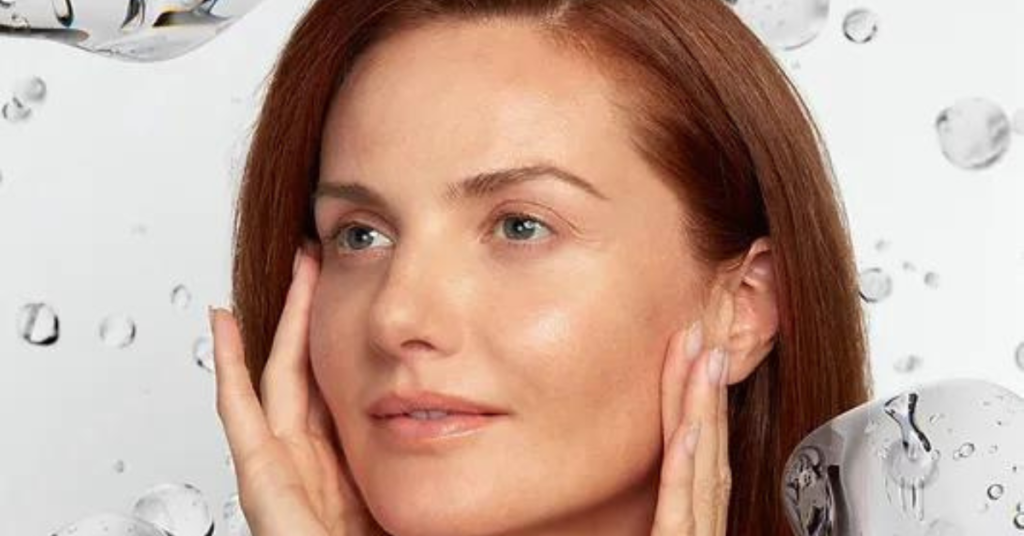
Introduction to Profhilo Structura Profhilo Structura marks a significant advancement in facial aesthetics, providing an innovative solution for restoring lost facial volume and contours. Developed by IBSA Derma, this cutting-edge injectable blends high and low molecular weight hyaluronic acid through the proprietary NAHYCO® Hybrid Technology. This new generation of the renowned Profhilo treatment is specifically designed to target and regenerate superficial facial fat, delivering natural and long-lasting results. What is Profhilo Structura? Profhilo Structura contains 45 mg of low molecular weight hyaluronic acid and 45 mg of high molecular weight hyaluronic acid in a 2 mL syringe. Unlike other hyaluronic acid fillers, it uses NAHYCO® Hybrid Technology to enhance its ability to restore facial volume and contours without chemically cross-linked molecules, resulting in a more natural appearance compared to traditional dermal fillers. Uses of Profhilo Structura Primarily intended for the face, Profhilo Structura is effective in reconstructing and reorienting facial fat to counteract volume loss and support facial bones affected by ageing. The treatment not only restores volume but also improves skin quality, making it firmer and more hydrated. Benefits of Profhilo Structura: – Natural Look: Maintains facial fat tissues for a natural appearance. – Long-lasting Results: Provides extended results, reducing the need for frequent touch-ups. – No Downtime: Requires no recovery time, allowing patients to resume daily activities immediately. – Improves Skin Quality: Enhances skin firmness and hydration alongside its volumising effects. Profhilo vs. Profhilo Structura While both products are developed by IBSA and utilise hyaluronic acid, Profhilo Structura differs from the original Profhilo in several ways: * Higher HA Content: Profhilo Structura contains 90 mg/2 mL compared to Profhilo’s 64 mg/2 mL. * Different Applications: Profhilo acts as an injectable moisturiser and collagen booster, whereas Profhilo Structura targets fat tissue restoration. * Injection Techniques: Tailored to target fat tissue regeneration, enhancing midface projection and reducing hollows and laxity. Profhilo and Profhilo Structura can be used in separate sessions as a combination treatment, providing optimal results by leveraging the strengths of both injectables. Clinical Evidence and Launch Clinical trials of Profhilo Structura have shown impressive results, with 95% of patients noticing significant improvements in the midface area after the first treatment, sustained over three months. This advanced treatment was launched on June 4th in London, marking its European debut nearly a decade after the original Profhilo was introduced by UK and Ireland distributor HA-Derma. ‘Profhilo is a trusted leader in aesthetic medicine,’ says Iveta Vinkler, Sales and Marketing Director at HA-Derma. ‘While fat often carries negative connotations, it’s actually a crucial marker of youth. Our insights into its role in youthful aesthetics are advancing rapidly. The launch of Profhilo Structura equips medical professionals with a natural product tailored to meet the evolving demands of today’s discerning aesthetic clients.’ Conclusion Profhilo Structura is a groundbreaking addition to non-surgical aesthetic procedures, offering a natural and effective method to regain facial volume and shape. Astrum Medical Clinic in London provides both Profhilo and Profhilo Structura treatments, ensuring patients achieve natural results with minimal recovery time. Embrace the future of facial aesthetics with Profhilo Structura, and rediscover a youthful, sculpted appearance.
How Long Do the Effects of Botox Injections Last?
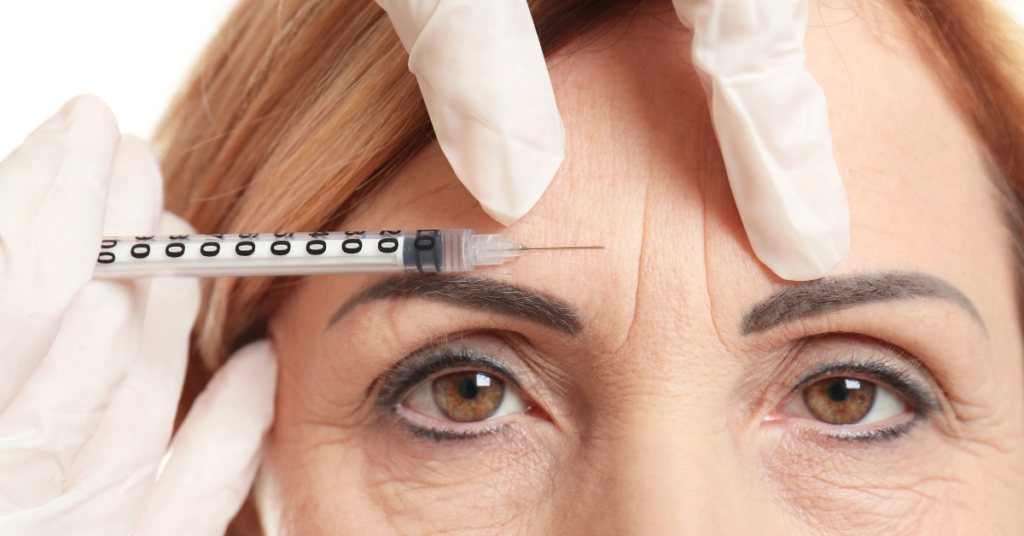
You might not know that the duration of Botox effects can vary greatly from person to person, influenced by factors like your metabolism and lifestyle choices. Typically, you’ll see results lasting between 3 to 4 months, but there’s more to this story. How Botox works, the timeline for initial effects, and the peak period all play vital roles in determining how long you’ll enjoy smoother skin. Understanding these elements can help you make informed decisions about your treatment plan. Curious about how to maximise the longevity of your results? Let’s explore the key aspects together. Key Takeaways – Botox effects typically last 3-4 months before requiring maintenance. – Duration is influenced by individual metabolism, lifestyle, and treated area. – Initial effects appear in 24-48 hours, peaking at 7-14 days. – Regular touch-ups every 3-4 months help maintain desired results. – Healthy habits and proper skin care can prolong Botox effects. Typical Duration of Botox Typically, Botox injections last for about three to four months before their effects begin to wear off. This timeframe can vary based on individual factors like metabolism, lifestyle, and the specific area treated. Regular upkeep is key to sustaining the desired results. By following a consistent maintenance schedule, you can guarantee that your appearance remains smooth and youthful. It’s essential to plan touch-up appointments around the three to four-month mark. These visits help in maintaining the efficacy of the treatment and prevent the reappearance of lines and wrinkles. During these sessions, your provider can assess the current state of your Botox and make any necessary adjustments. Follow-up consultations play a critical role in the overall treatment plan. By scheduling these, you allow your provider to monitor your progress and make treatment adjustments as needed. These consultations ensure that the Botox continues to work effectively for you, providing the best possible results. Incorporating these practices into your routine guarantees that you maximise the benefits of Botox. A well-structured maintenance schedule, coupled with timely touch-up appointments and regular follow-up consultations, will help you maintain your desired appearance consistently. How Botox Works Botox functions by blocking the nerve signals that trigger muscles to contract, thereby diminishing the visibility of wrinkles and fine lines. When administered into specific facial muscles, Botox initiates a temporary muscle paralysis. This muscle immobilisation prevents the muscles from engaging in the repetitive movements that contribute to the development of wrinkles and fine lines over time. For those interested in cosmetic enhancement, Botox provides a significant aesthetic enhancement. By focusing on areas susceptible to dynamic wrinkles, such as the forehead, lines around the eyes, and frown lines between the eyebrows, Botox smoothes out these lines, offering a more youthful appearance. This renders it a sought-after anti-aging solution for individuals aiming to uphold a vibrant and revitalised look. The procedure involves a meticulous evaluation of your facial structure to identify the exact injection points. The goal is to achieve a natural look without compromising facial expressions. It’s not solely about immobilising the muscles, but rather about skillfully moderating their activity to improve your overall appearance. This precise method guarantees you attain the desired cosmetic enhancement, establishing Botox as a dependable option for aesthetic enhancement and an efficient anti-aging remedy. Initial Effects Timeline You’ll start noticing the initial effects of Botox injections within 24 to 48 hours. Typically, you’ll observe a gradual reduction in fine lines and wrinkles as the Botox begins to relax the targeted muscles. During this early period, it’s important to follow any aftercare instructions provided by your healthcare professional to minimise the risk of complications and support the recovery process. Common side effects can include mild swelling, redness, or bruising at the injection sites. These side effects usually subside within a few days. Some individuals may experience slight headaches or a feeling of tightness in the treated areas. If you encounter any severe or persistent side effects, it’s important to contact your healthcare provider immediately. To effectively maintain results, you should consider following touch-up recommendations provided by your practitioner. Regular touch-ups are typically suggested every three to four months to sustain the desired aesthetic outcomes. Consistent follow-ups also help in monitoring your progress and making any necessary adjustments to your treatment plan. By adhering to these guidelines, you can prolong the youthful appearance achieved through Botox and guarantee that any minor side effects are managed promptly and efficiently. Peak Effect Period Reaching its peak effect around 7 to 14 days post-injection, Botox delivers its maximum wrinkle-smoothing benefits during this period. You’ll notice the most significant reduction in fine lines and wrinkles, achieving a refreshed and youthful appearance. This peak period is vital for evaluating how well the treatment aligns with your aesthetic goals. During this time, it’s crucial to assess whether Botox has met your expectations. If you feel certain areas require further refinement, touch up options are available. These minor adjustments can fine-tune the results, making sure you achieve the desired level of cosmetic enhancements. To maintain these best results, establishing a maintenance schedule is key. Most practitioners recommend follow-up treatments every 3 to 4 months. Keeping a consistent schedule helps sustain the wrinkle-reducing effects and prevents the return of fine lines. By sticking to a regular maintenance plan, you guarantee that your aesthetic goals are consistently met. Monitoring your skin’s response during this peak period allows you and your practitioner to make informed decisions about future treatments. This proactive approach guarantees you continually enjoy the benefits of Botox while meeting your long-term cosmetic enhancement objectives. Gradual Decline Phase As the peak effect of the treatment begins to wane, you’ll notice a gradual return of fine lines and wrinkles over the following months. This phase is normal and signifies the slow progression of muscle activity resuming in the treated areas. Your skin elasticity will play a pivotal role during this period, impacting how quickly wrinkles reappear. During the gradual




